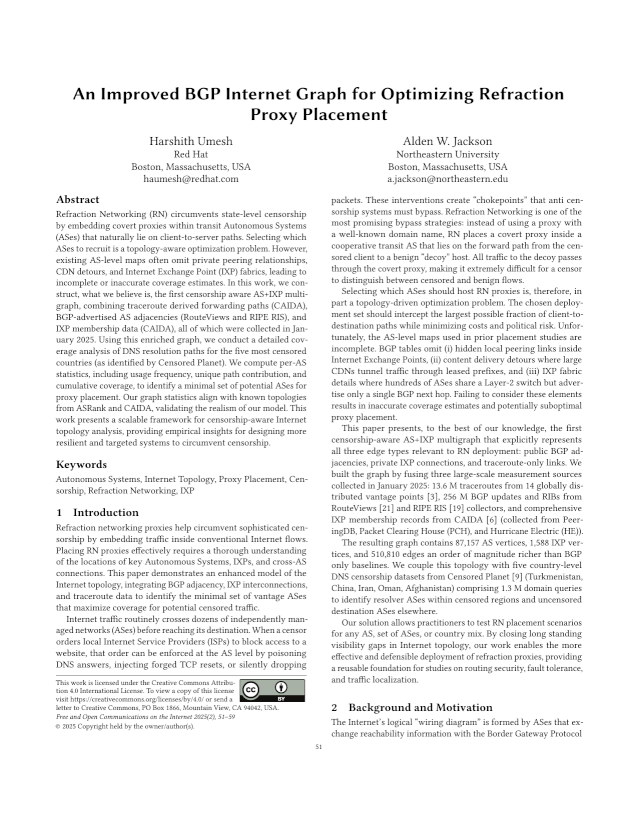An Improved BGP Internet Graph for Optimizing Refraction Proxy Placement
Authors: Harshith Umesh (Red Hat), Alden W. Jackson (Northeastern University)
Year: 2025
Issue: 2
Pages: 51–59
Abstract: Refraction Networking (RN) circumvents state-level censorship by embedding covert proxies within transit Autonomous Systems (ASes) that naturally lie on client-to-server paths. Selecting which ASes to recruit is a topology-aware optimization problem. However, existing AS-level maps often omit private peering relationships, CDN detours, and Internet Exchange Point (IXP) fabrics, leading to incomplete or inaccurate coverage estimates. In this work, we construct, what we believe is, the first censorship aware AS+IXP multi-graph, combining traceroute derived forwarding paths (CAIDA), BGP-advertised AS adjacencies (RouteViews and RIPE RIS), and IXP membership data (CAIDA), all of which were collected in January 2025. Using this enriched graph, we conduct a detailed coverage analysis of DNS resolution paths for the five most censored countries (as identified by Censored Planet). We compute per-AS statistics, including usage frequency, unique path contribution, and cumulative coverage, to identify a minimal set of potential ASes for proxy placement. Our graph statistics align with known topologies from ASRank and CAIDA, validating the realism of our model. This work presents a scalable framework for censorship-aware Internet topology analysis, providing empirical insights for designing more resilient and targeted systems to circumvent censorship.
Copyright in FOCI articles are held by their authors. This article is published under a Creative Commons Attribution 4.0 license.

